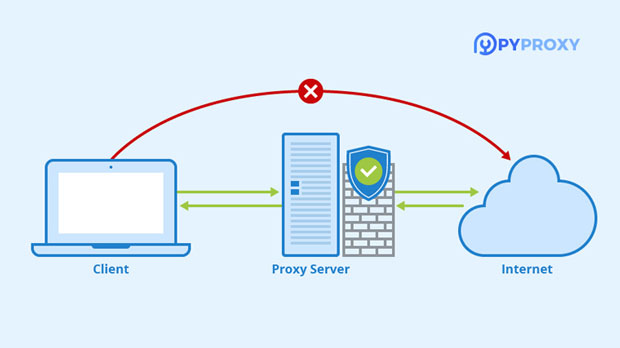Using free proxy IP SOCKS5 is a topic that raises concerns about security, privacy, and the reliability of online connections. While it may seem appealing due to its no-cost nature, the risks associated with free proxies cannot be ignored. These proxies, which route your internet traffic through remote servers, promise anonymity and security. However, in reality, they often compromise your privacy and may expose you to various threats. This article will explore the potential risks of using free socks5 proxies and highlight why relying on them might not be the best decision for your online security. Understanding Proxy IP SOCKS5Before diving into the risks, it is essential to understand what SOCKS5 proxies are and how they function. SOCKS5, which stands for "Socket Secure version 5," is a protocol that facilitates secure communication between clients and servers over a network. Unlike regular proxies, SOCKS5 supports a wider range of internet traffic, including HTTP, FTP, and even email services, making it more versatile. However, the critical factor with SOCKS5 is that it acts as a mediator between the user and the target server, effectively masking your IP address. This offers a layer of anonymity that many users seek, especially when bypassing regional restrictions or maintaining privacy during online activities.Why Free Proxies Are TemptingThe appeal of free proxy IP SOCKS5 services is quite clear: they provide a way to surf the internet anonymously without paying for a subscription. For individuals on a budget or those who need temporary access to untraceable browsing, free proxies seem like a convenient solution. Free proxies often don’t require registration or authentication, making them easily accessible to anyone.Despite these advantages, free services come with several hidden dangers, which we will explore in the following sections.The Risks of Using Free Proxy IP SOCKS51. Privacy and Data Security ConcernsOne of the most significant risks associated with free SOCKS5 proxies is the potential compromise of your privacy. Free proxy providers often do not have robust privacy policies in place. In some cases, these proxies can log your internet activity, including websites visited, data entered, and even personal information such as usernames and passwords. Free proxy services may sell this data to third parties, exposing you to identity theft or unwanted tracking by advertisers. This lack of transparency and security means that your sensitive data is not adequately protected.2. Malicious Actors and Data TheftFree proxies are often operated by unknown entities or individuals who might have malicious intentions. Some free SOCKS5 proxies are set up specifically to intercept traffic, steal data, and inject malware into the user's system. These proxy servers may capture login credentials, personal files, or even credit card information if not used with additional security measures.Hackers and cybercriminals may use free proxies to harvest valuable personal information, making them an attractive target for anyone looking to exploit vulnerabilities in online users.3. Slow Speeds and Unreliable ConnectionsAnother downside to free proxies is the lack of reliable performance. Since free services typically have many users, the servers can become overloaded, leading to slow internet speeds, connection drops, or unstable connections. These disruptions can make using the internet cumbersome, especially for tasks requiring high bandwidth, such as streaming or gaming.Moreover, free proxies may not be equipped with adequate infrastructure to handle large volumes of data, resulting in frequent interruptions that can negatively affect the user experience.4. Exposure to Malware and AdvertisementsMany free proxy services inject ads into users' web traffic to generate revenue. These ads can sometimes be intrusive and, in some cases, contain malicious code designed to infect your device. Clicking on such ads can lead to the installation of malware, ransomware, or spyware without your knowledge. Even though SOCKS5 proxies themselves are not directly responsible for malware, the environment they operate in can expose users to these risks. Some proxies may redirect users to fake websites designed to steal personal data or infect systems with harmful software.5. Legal and Ethical IssuesUsing free proxy services can also present legal and ethical concerns. Many free SOCKS5 proxies operate in jurisdictions where internet laws are unclear or not enforced. These proxies can be used to access restricted content, bypass geo-blocks, or carry out illegal activities, such as downloading pirated content or conducting cyber-attacks. If a free proxy server is being used for illegal purposes, you, as the user, could be held accountable. Law enforcement agencies may trace the IP address back to you, even if it was masked by the proxy.6. Lack of Encryption and Security FeaturesNot all SOCKS5 proxies offer encryption, and even when they do, the level of encryption may not be strong enough to protect your data from sophisticated attackers. Without proper encryption, your online activities can be intercepted by third parties, including your internet service provider, hackers, or even government agencies. This lack of security can be particularly concerning when transmitting sensitive information, such as credit card numbers or personal identification details.In addition, free proxy services may not offer features such as DNS leak protection or IP masking, leaving your connection vulnerable to exposure.7. Potential for Service Interruption or ShutdownBecause free proxies are often maintained by individuals or small groups without financial backing, there is a risk that these services could be discontinued at any time. Users of free SOCKS5 proxies might experience unexpected shutdowns or periods of unavailability, leaving them without an alternative solution. Unlike paid services, which offer support and stability, free proxies offer no guarantees of uptime or continued service.What to Consider Before Using Free Proxy IP SOCKS51. Always Verify the SourceBefore using a free proxy, it’s important to research and verify the legitimacy of the provider. Many proxy services claim to offer anonymity and privacy but may actually be run by malicious actors. Look for reviews, ratings, and information from trusted sources to ensure the proxy service you are considering is safe to use.2. Limit Sensitive ActivitiesIf you decide to use a free socks5 proxy, it is advisable to limit the activities that require the exchange of sensitive information. Avoid logging into online banking, entering credit card details, or transmitting private documents while using a free proxy, as your data may not be secure.3. Use Additional Security MeasuresConsider using additional security measures, such as a Virtual Private Network (VPN) or end-to-end encryption, when using a free socks5 proxy. These tools can provide an extra layer of protection by securing your connection and preventing your data from being intercepted.ConclusionWhile free proxy IP SOCKS5 services may seem like an attractive solution for anonymous browsing, they come with significant risks to privacy, security, and reliability. These services can expose users to data theft, malware, and legal issues while offering slow speeds and unreliable connections. Therefore, it is crucial to understand the potential dangers and take necessary precautions before using free proxies for any online activities. In many cases, investing in a paid, trustworthy service may be a safer and more reliable option for protecting your online privacy and security.
Jan 07, 2025
![arrow]()



























































